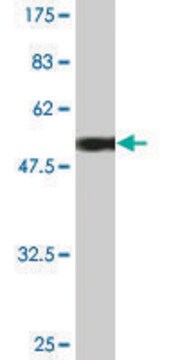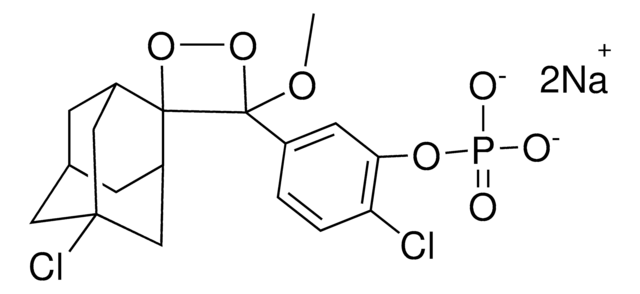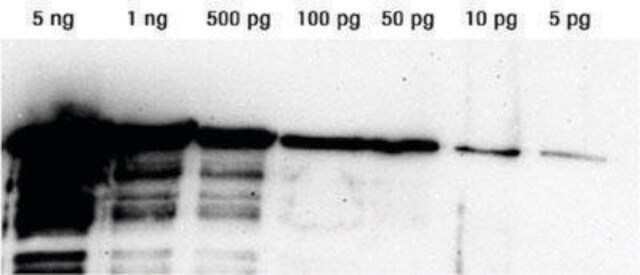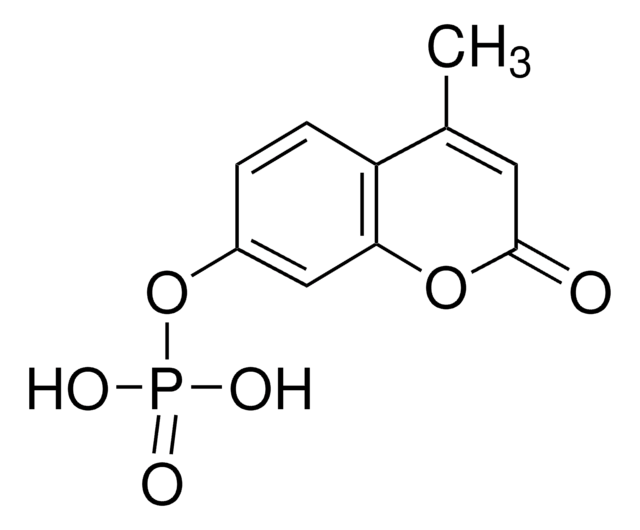11582950001
Roche
BM Chemiluminescence ELISA Substrate (POD)
Synonym(s):
ELISA substrate
About This Item
Recommended Products
form
solution
Quality Level
packaging
pkg of 250 mL (for 2500 wells or 1000 tubes)
manufacturer/tradename
Roche
storage condition
(Keep container tightly closed in a dry and well-ventilated place.)
technique(s)
ELISA: suitable
color
clear colorless
solubility
water: miscible
suitability
suitable for chemiluminescence
shipped in
wet ice
storage temp.
2-8°C
General description
Application
Features and Benefits
- Improved sensitivity
- Large dynamic range
- Rapid and constant signal
Contents
Substrate Reagent A (buffered solution that contains luminol/4-iodophenol)
Starting Reagent B (buffered solution that contains a stabilized form of H2O2)
Principle
Preparation Note
The BM Chemiluminescence ELISA Substrate is supplied as a set of two stable solutions. Depending on the scale of the assay, the appropriate amount of substrate solution has to be prepared 15 minutes before use:
- Add to 100 parts of solution A one part of solution B.
- Stir the mixture for at least 15 minutes at 15 to 25 °C to equilibrate the components.
Storage conditions (working solution): The premixed solution is stable for 1 week, when stored at 2 to 8 °C.
Other Notes
Storage Class Code
12 - Non Combustible Liquids
WGK
WGK 1
Flash Point(F)
does not flash
Flash Point(C)
does not flash
Certificates of Analysis (COA)
Search for Certificates of Analysis (COA) by entering the products Lot/Batch Number. Lot and Batch Numbers can be found on a product’s label following the words ‘Lot’ or ‘Batch’.
Already Own This Product?
Find documentation for the products that you have recently purchased in the Document Library.
Customers Also Viewed
Our team of scientists has experience in all areas of research including Life Science, Material Science, Chemical Synthesis, Chromatography, Analytical and many others.
Contact Technical Service

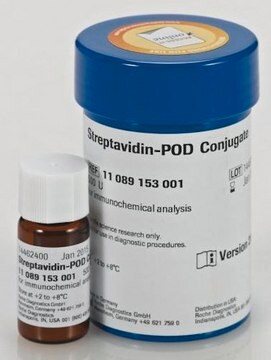
![BM Chemiluminescence Western Blotting Substrate (POD) pkg of 1 set (11500708001 [1,000 cm2 membrane]), pkg of 1 set (11500694001 [4,000 cm2 membrane])](/deepweb/assets/sigmaaldrich/product/images/352/091/ef743cea-ccd8-44f1-8f3b-dec5a1e4f5d1/640/ef743cea-ccd8-44f1-8f3b-dec5a1e4f5d1.jpg)
